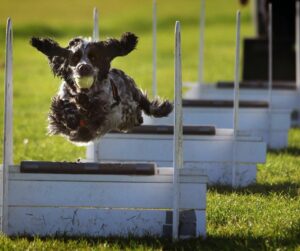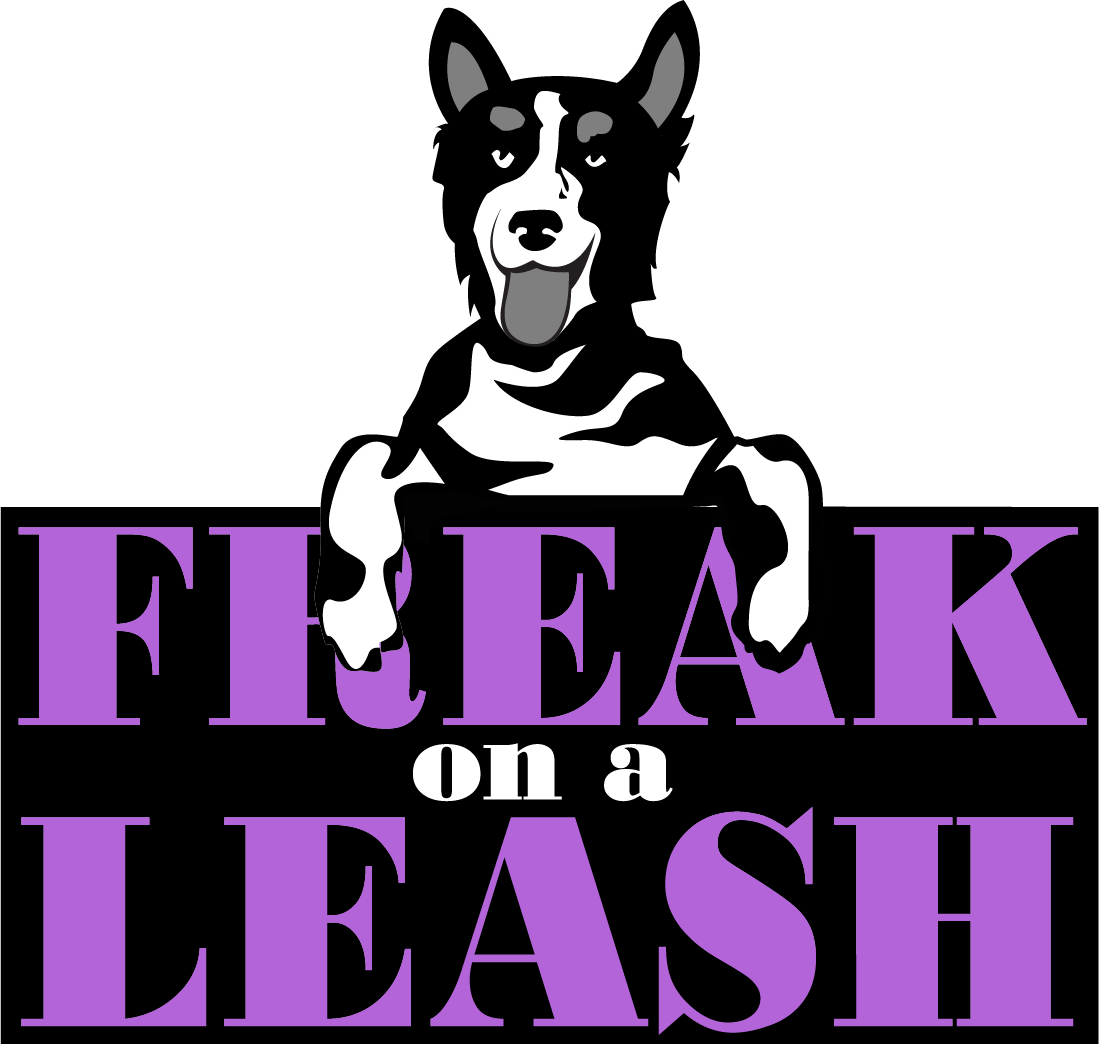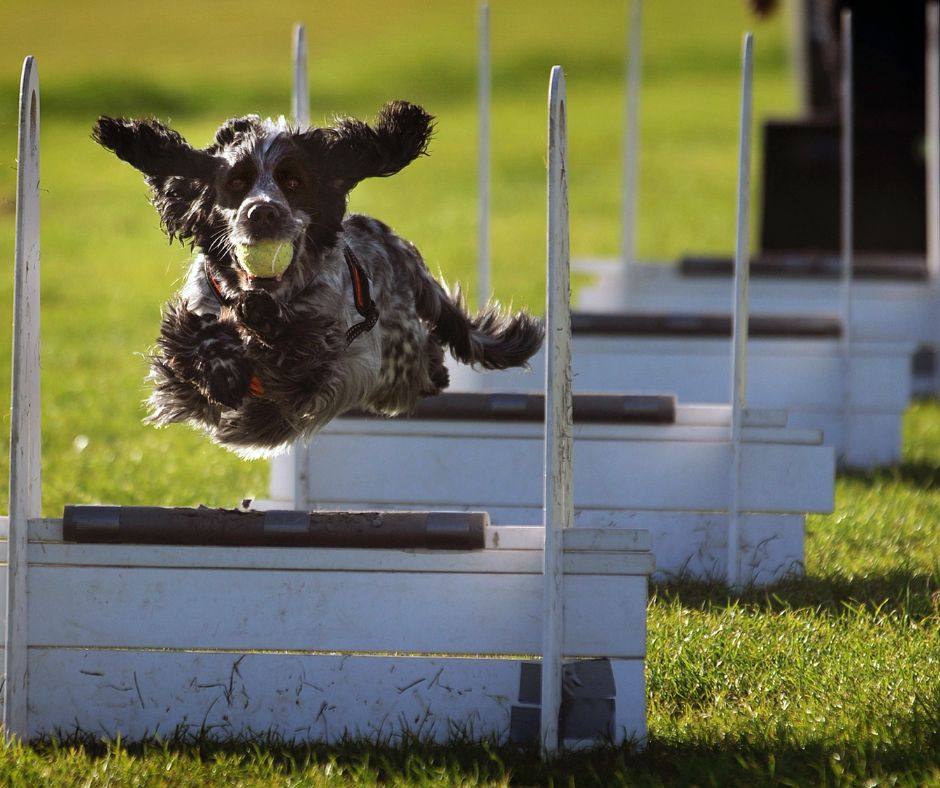Key Highlights
- Flyball is a fast-paced and exciting dog sport that combines relay racing and drag racing.
- Dogs race over hurdles, release a ball from a spring-loaded box, and return with the ball to the starting line.
- Flyball offers physical, mental, and social benefits for dogs, making it a great activity for both dogs and their humans.
- Training and preparing your dog for flyball is essential in ensuring they are fit and ready for the sport.
- Participating in flyball tournaments allows dogs and their people to compete against other teams and showcase their skills.

Introduction
Welcome to the ultimate guide to flyball dogs! If you’re looking for an exciting and fast-paced sport to engage your furry friend, flyball is the perfect choice. Flyball combines relay racing and drag racing for dogs, creating a thrilling experience for both dogs and people.
In flyball, a team of dogs takes turns racing over hurdles, releasing a ball from a spring-loaded box, and returning with the ball to the starting line. The first team to have all four dogs successfully complete the course wins. Flyball is a high-energy sport that requires speed, agility, and teamwork.
Flyball offers numerous benefits for dogs, both physically and mentally. It provides a great energy outlet and helps improve dogs’ fitness and agility. Additionally, flyball offers mental stimulation and socialization opportunities, as dogs interact with other teams and compete in tournaments.
Preparing your dog for flyball involves assessing their fitness level and providing basic training to ensure they are ready for the sport. Additionally, having the right equipment, such as a flyball box and balls, is essential for a successful flyball training.
In this guide, we will explore the history of flyball, how it works, how to prepare your dog for flyball, essential equipment needed, and the benefits of participating in flyball. We will also discuss how to compete in flyball tournaments and provide tips for getting started with flyball training. So, let’s dive in and discover the exciting world of flyball!
Understanding Flyball
Flyball is a thrilling sport that combines the excitement of relay racing and drag racing for dogs. It is often referred to as the “tennis ball relay race” for dogs. In this sport, a team of four dogs races against another team, taking turns to complete a course that includes hurdles and a flyball box. The dogs must jump over the hurdles, trigger the flyball box to release a tennis ball, catch the ball, and then return to the starting line. The team that completes the course with all four dogs in the shortest time wins the race.
The History of Flyball
Flyball originated in the 1970s and quickly gained popularity among dog enthusiasts. The sport was officially recognized and organized by the North American Flyball Association (NAFA) in 1984. NAFA is the governing body for flyball in North America, promoting and regulating the sport.
Flyball started as a way for dog trainers to showcase and develop their dogs’ skills in a fun and competitive environment. Over the years, it has evolved into a popular sport for both purebred and mixed-breed dogs.
Today, flyball teams can be found across the United States and Canada, with over 375 active clubs registered with NAFA. The sport continues to grow, attracting dog lovers who are looking for a dynamic and engaging activity for their pets. Whether you’re a seasoned competitor or a beginner, flyball offers a unique bonding experience for dogs and their owners while fostering a sense of teamwork and camaraderie.
How Flyball Works: The Basics
In flyball, teams of four dogs compete against each other in the format of a relay-style race. Here’s how it works:
- The race begins at the starting line, where the first dog on each team waits for the signal to begin.
- The dogs must jump over a series of hurdles as they race towards the flyball box.
- When they reach the flyball box, they trigger it to release a tennis ball.
- The dogs catch the ball and then return to the starting line, clearing the hurdles once again.
- Once the first dog completes the course, the next dog on the team takes its turn, creating a seamless relay.
- The team that successfully completes the course with all four dogs in the shortest time wins the race.
Flyball requires speed, agility, and teamwork from both the dogs and their handlers. It’s an exhilarating sport that showcases the athleticism and bond between dogs and their people.
Preparing Your Dog for Flyball
Preparing your dog for flyball is essential to ensure they are fit, trained, and ready to participate in the sport. Here are some key steps to follow when getting your dog ready for flyball:
- Assess your dog’s fitness level to ensure they are physically capable of participating in the sport.
- Provide basic training to your dog, focusing on obedience and agility skills.
- Introduce your dog to the concept of retrieving and catching a ball, as this is a crucial part of flyball.
- Start with basic commands, such as sit, stay, and recall, to ensure your dog has good obedience skills.
- Gradually increase the difficulty of the training exercises and challenges as your dog progresses.
By taking the time to train and prepare your dog for flyball, you will set them up for success and create a strong foundation for their future in the sport.
Assessing Your Dog’s Fitness for Flyball
Before participating in flyball, it’s important to assess your dog’s fitness level to ensure they are physically capable of handling the demands of the sport. Here are some factors to consider when assessing your dog’s fitness for flyball:
- Agility: Flyball requires dogs to navigate hurdles and quickly change direction. Ensure that your dog is agile and capable of jumping over obstacles without issue.
- Obedience: Reliable obedience is crucial in flyball. Your dog should be able to follow your cues and respond promptly.
- Breed: While flyball is open to all breeds, certain breeds may be better suited for the sport due to their natural athleticism and drive. Consider your dog’s breed characteristics and consult with an experienced flyball trainer or handler to determine whether your dog is well-suited for the sport.
By evaluating your dog’s fitness and considering these factors, you can make an informed decision about your dog’s readiness for flyball and tailor their training accordingly.
Basic Training Tips Before Starting Flyball
Before diving into flyball training, it’s important to establish a strong foundation of basic obedience training. Here are some basic training tips to consider before starting flyball:
- Recall: Ensure your dog has a reliable recall command, as they will need to return to the starting line after completing the course.
- Fetch Training: Introduce your dog to the concept of retrieving and catching a ball, as this is a fundamental skill in flyball.
- Puppy Socialization: If your dog is still a puppy, focus on socializing them with other dogs and people to build their confidence and encourage positive interactions in new and busy environments.
By laying the groundwork with these basic training tips, you will set your dog up for success in flyball and create a solid training foundation for more advanced skills.
Essential Equipment for Flyball
To participate in flyball, you will need some essential equipment. Here’s a list of key necessary items:
- Flyball Box: The flyball box is a specialized device that holds and releases the tennis ball during the race.
- Balls: Tennis balls are used in flyball races for dogs to catch and return to the starting line.
- Hurdles: Flyball courses include hurdles that dogs must jump over. These hurdles are typically adjustable to accommodate different sized dogs.
- Gear: Depending on your dog’s needs and preferences, you may need additional gear such as a harness, leash, or training treats.
Having the right equipment is crucial for a successful flyball experience. The right gear, including balls, hurdles, and appropriate training classes, will ensure that your dog is prepared and equipped for flyball. Make sure to invest in high-quality, durable equipment that is suitable for your dog’s size and breed.
The Flyball Box: What You Need to Know
The flyball box is a critical piece of equipment in flyball. It holds and releases the tennis ball, ensuring a fair and consistent race. Here’s what you need to know about the flyball box:
The flyball box is a spring-loaded device that holds a tennis ball. It is positioned at the end of the course, and dogs trigger it to release the ball.
The flyball box uses a spring mechanism to launch the ball into the air. When a dog steps on the pad, it releases the spring, propelling the ball forward.
The flyball box is designed to provide consistent ball release, ensuring a fair competition between teams. The height and distance of the ball’s release can be adjusted to accommodate different dog sizes.
The flyball box plays a pivotal role in the relay style format of flyball. Each dog on the team triggers the box to release the ball before returning to the starting line.
Understanding how the flyball box works is important for both handlers and dogs. It ensures a smooth and engaging competition for all participants.
Training Your Dog for Flyball
Training is an integral part of preparing your dog for flyball. Enrolling your dog in flyball training classes can be beneficial. Classes provide structured training sessions and expert guidance to help you and your dog master the skills required for flyball. The training focuses on teaching your dog the specific skills required for the sport, such as jumping over hurdles, triggering the flyball box, and catching and returning the ball. Here are some important aspects to consider when training your dog for flyball:
- Beginner Flyball Classes: Beginner flyball classes provide structured training sessions with experienced instructors who can guide you through the training process.
- Advanced Training Techniques: As your dog progresses in flyball, advanced training techniques can be introduced such as improving speed and agility, refining ball retrieval skills, and perfecting relay transitions.
By investing time and effort in flyball training, you can develop a strong bond with your dog and help them reach their full potential in the sport.
Getting Started with Flyball Training
If you’re new to flyball training, it’s essential to start with the basics. Here’s a step-by-step guide to getting started with flyball training:
- Introduction to Flyball: Start by introducing your dog to the concept of flyball. Allow them to explore the flyball equipment and get comfortable with the environment.
- Beginner Classes: Enroll your dog in beginner flyball classes. Classes provide a structured introduction to the sport and help your dog learn the basic skills required.
- Foundation Training: Focus on building a strong foundation of obedience and agility skills. Teach your dog to follow commands, jump over hurdles, and retrieve a ball.
- Progressive Training: Gradually increase the difficulty of the training exercises and challenges as your dog becomes more proficient in the basic skills.
- Practice and Repetition: Regularly practice flyball exercises and drills to reinforce the training and improve your dog’s speed and accuracy.
By following these steps, you can lay a solid foundation for your dog’s flyball training journey.
Advanced Training Techniques
Once your dog has mastered the basics of flyball, you will be able to introduce more advanced training techniques to improve their performance. Here are some advanced training techniques for flyball:
- Intermediate Flyball: Progress to more challenging flyball exercises and drills that involve faster speeds and tighter relay transitions.
- Relay Training: Focus on perfecting relay transitions, ensuring smooth handoffs between dogs and minimizing time between runs.
- Agility Training: Incorporating agility exercises into your training routine can improve your dog’s speed, agility, and overall performance in flyball.
By incorporating these advanced training techniques into your training regimen, you can take your dog’s flyball skills to the next level and compete at a higher level of competition.
The Benefits of Flyball for Dogs
Flyball offers numerous benefits for dogs, making it an excellent activity for both physical and mental stimulation. Here are some key benefits of flyball:
- Physical Benefits: Flyball provides a high-intensity workout, promoting fitness, strength, and endurance for dogs.
- Mental Benefits: Flyball offers mental stimulation through problem-solving and learning new skills, enhancing cognitive function.
- Social Benefits: Participating in flyball allows dogs to socialize with other dogs and handlers, fostering positive interactions and building social skills.
By engaging in flyball, dogs can improve their overall well-being, both physically and mentally, while enjoying a fun and challenging activity.
Physical Benefits of Participating in Flyball
Participating in flyball offers a range of physical benefits for dogs. Here are the key physical benefits of flyball:
- Fitness: Flyball is a high-energy sport that provides an excellent cardiovascular workout for dogs, promoting overall fitness and stamina.
- Agility: Flyball requires dogs to navigate hurdles, improving their agility, coordination, and balance.
- Muscle Tone: The repetitive jumping and running involved in flyball help tone and strengthen the muscles of the legs and core.
- Endurance: Flyball races require dogs to maintain their speed and stamina throughout the course, enhancing their endurance levels.
- Weight Management: Regular participation in flyball can help dogs maintain a healthy weight and prevent obesity, contributing to their overall well-being.
By engaging in flyball, dogs can enjoy a fun and challenging activity while reaping the physical benefits of increased fitness, agility, and endurance.
Mental and Social Benefits for Your Dog
Participating in flyball offers numerous mental and social benefits for dogs. Here are the key benefits:
- Socialization: Flyball allows dogs to interact with other dogs and handlers, enhancing their social skills and promoting positive socialization.
- Mental Stimulation: Flyball provides mental stimulation through problem-solving, learning new skills, and the excitement of the sport, keeping dogs mentally engaged.
- Bonding: Participating in flyball as a team strengthens the bond between dogs and their handlers, fostering trust, communication, and teamwork.
- Sense of Purpose: Being a part of a flyball team gives dogs a sense of purpose and achievement, boosting their confidence and self-esteem.
By engaging in flyball, dogs can enjoy the mental and social benefits of increased socialization, mental stimulation, and a strong sense of belonging.
Competing in Flyball Tournaments
Competing in flyball tournaments allows dogs and their owners to showcase their skills and compete against other teams. Here’s what you need to know about competing in flyball tournaments:
- Flyball Tournaments: Flyball tournaments are organized events where teams compete against each other in a series of races.
- Competing: Competing in flyball tournaments requires teamwork, speed, and accuracy to complete the course in the shortest time possible.
- Regional Director: Each region has a designated Regional Director who can provide information about local tournaments, teams, and resources.
By participating in flyball tournaments, you can take your dog’s flyball experience to the next level and enjoy the excitement of competing against other teams.
Finding Flyball Tournaments Near You
Finding flyball tournaments near you is essential to get involved in the sport. Here are some ways to find flyball tournaments:
- Contact NAFA: The North American Flyball Association (NAFA) is the governing body for flyball. You can contact NAFA for information on upcoming tournaments and local teams.
- Regional Director: Each region has a designated Regional Director who can provide information about local tournaments, teams, and resources. Reach out to your regional director for details on tournaments in your area.
- Online Resources: Online platforms, such as NAFA’s website or social media groups, may provide information on upcoming tournaments and contact details for organizers.
By utilizing these resources, you can find flyball tournaments near you and get involved in the exciting world of competitive flyball.
Preparing for Your First Tournament
Preparing for your first flyball tournament requires careful planning and preparation. Here are some key steps to consider:
- Registration: Register your team for the tournament well in advance to secure your spot. Follow the registration process outlined by the tournament organizers.
- Prerequisites: Some tournaments may have prerequisites or requirements for participating teams. Be sure your team meets all the necessary criteria before registering.
- Certificate: Obtain any required certificates or documentation, such as proof of vaccinations or membership in a flyball organization, per the tournament’s guidelines.
By following these steps and ensuring that you have met all the requirements, you’ll be well-prepared and ready to make the most of your first flyball tournament experience.
Conclusion
From understanding the history of flyball to preparing your dog and participating in tournaments, we’ve covered it all. Flyball is more than just a sport; it is a wonderful way to engage and bond with your dog while keeping them physically and mentally fit. The benefits for your canine companion are immense, ranging from improved physical health to enhanced social skills. If you’re looking for an exciting activity to enjoy with your dog, consider giving flyball a try—it can be a rewarding experience for both you and your loyal four-legged companion. Looking for a flyball team near you? The Hairier Jump Jets are always looking for new team members. We promise there is no sport more fun than flyball!

